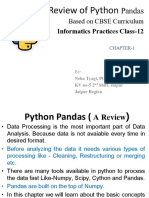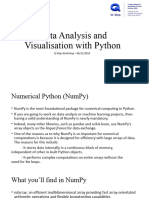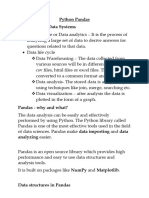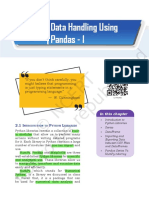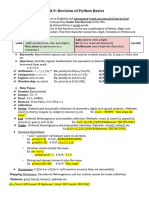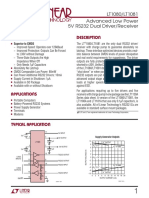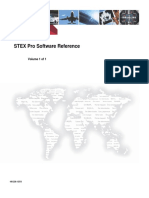0% found this document useful (0 votes)
8 views34 pagesPandas
The document introduces Python Pandas, a popular open-source library for data analysis that provides high-performance tools and data structures. It covers installation, features, and the creation of Series and DataFrame objects, as well as comparisons with NumPy arrays. The document also discusses various operations and attributes associated with Series objects.
Uploaded by
anilkumarrapolu.5809Copyright
© © All Rights Reserved
We take content rights seriously. If you suspect this is your content, claim it here.
Available Formats
Download as DOCX, PDF, TXT or read online on Scribd
0% found this document useful (0 votes)
8 views34 pagesPandas
The document introduces Python Pandas, a popular open-source library for data analysis that provides high-performance tools and data structures. It covers installation, features, and the creation of Series and DataFrame objects, as well as comparisons with NumPy arrays. The document also discusses various operations and attributes associated with Series objects.
Uploaded by
anilkumarrapolu.5809Copyright
© © All Rights Reserved
We take content rights seriously. If you suspect this is your content, claim it here.
Available Formats
Download as DOCX, PDF, TXT or read online on Scribd
/ 34



